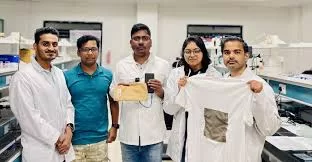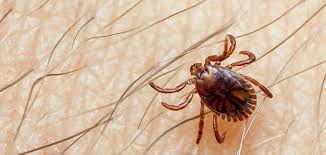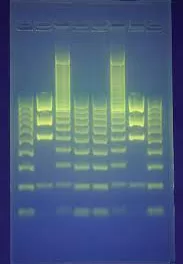Guwahati, India – Researchers at the Indian Institute of Technology (IIT) Guwahati have developed an innovative water-repellent, conductive textile capable of converting electricity and sunlight into heat. This breakthrough aims to keep individuals warm in extreme cold conditions, addressing critical health concerns such as hemoconcentration-based arterial blood clotting, breathing difficulties, and weakened immunity.
Traditional conductive textiles have often faced limitations such as poor durability, high power consumption, and vulnerability to water exposure. The team at IIT Guwahati has overcome these challenges by using ultra-thin and clean silver nanowires sprayed onto cotton fabric, making it both conductive and flexible. The nanowires, 100,000 times thinner than human hair, allow electricity to flow efficiently, generating heat while maintaining a soft and breathable texture.
“Our textile is self-cleanable, breathable, and flexible and can easily be scaled up. Its durability and long-lasting performance make it useful in a range of applications that require controlled heating,” said Prof. Uttam Manna from the Department of Chemistry, IIT Guwahati.
Silver nanowires were chosen for their excellent electrical conductivity and ability to convert both electricity and sunlight into heat. Their low electrical resistance enables effective electrothermal conversion at a low applied voltage, eliminating the risk of electrocution. To counteract silver’s tendency to tarnish over time, the researchers applied a water-repellent coating to protect against oxidation, water, and stains.
This coating, inspired by the microstructure of lotus leaves, creates a rough surface texture that causes water to roll off rather than soak in. This feature ensures the textile remains dry and maintains conductivity, even in wet or humid conditions. The protective layer also enhances resistance against sweat, rain, and accidental spills, making the material reliable for outdoor and everyday use.
The conductive textile can operate using a small rechargeable battery or solar energy, maintaining temperatures between 40°C and 60°C for over 10 hours. Researchers tested the fabric in wearable knee and elbow bands, demonstrating its effectiveness in providing sustained warmth for individuals exposed to cold climates and those suffering from arthritis who require localized heat therapy.
The findings of this study have been published in the journal Nano-Micro-Small, highlighting the textile’s potential in various practical applications, including cold-weather apparel and medical therapy.
Disclaimer: The information presented in this article is based on research findings and is intended for informational purposes only. Further validation and commercial-scale production are required before widespread adoption. Readers are advised to consult experts before using similar technologies for medical or industrial applications.











